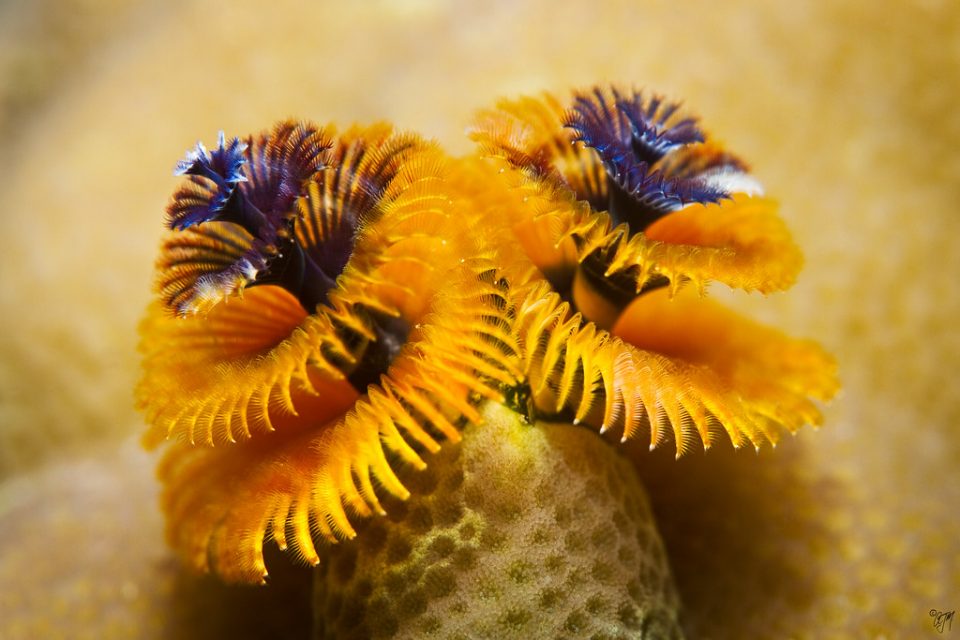The category should be used for all English posts to allow proper display in the feed on our webpages.
Category: In English

Door 19: The genome of the flatworm model species Schmidtea mediterranea
Earlier this year in September Ivanković and colleagues published the results of a study coordinated by the research group of Jochen Rink at the Max Planck Institute for Multidisciplinary Sciences, Göttingen, Germany and presented highly improved genomes of the four planarian flatworm species from the genus Schmidtea. These […]

Door 18: Forgotten Reefs; Struggles for Survival in the Strait of Hormuz
For the next door of our Advent calendar, I’d like to take you on a journey to the Strait of Hormuz, one of the most politically significant waterways. It is located between the Persian Gulf and the Gulf of Oman in the northern Indian Ocean, and acts as […]

Door 17: Meet Finn, an adventurous zooplankton!
Hi! My name is Finn, and I’m a teen Calanus finmarchicus (proudly in my fifth copepodite stage of development!). I am honoured to open the Door 17! To be honest, I should be napping right now, like all my trillions of friends, but I’m just too excited because soon, I’ll […]

Door 13: Discovering hidden microscopic diversity in Norway
Whenever you hear the word fungi, chances are high that you are thinking of the colourful variation of mushroom fruiting bodies popping up in high abundance during the fall. Or maybe you’re thinking of the vast webs of underground mycelia that most fungi produce. For some, the frightening […]

Door 12: The Gift of Collaboration
It’s the holiday season, and as we know it’s a season of giving and exchange. One way I want to acknowledge a “gift” I received this year is to talk about the importance of collaboration and free exchange of knowledge and information. I’m currently working on my Master’s […]

Door 11: Finding new species to Norway – how easy can it be?
For most people, discovering new species seems like an extraordinary event, something that happens only once in a lifetime or at least something very rare. However, for some groups of organisms, particularly understudied ones, it’s actually very easy to come across a new species to science and perhaps […]

Christmas in the Ocean: The Marvel of Christmas Tree Worms
Today, I want to introduce a fascinating group of worms that are particularly relevant during the Christmas season. Known as Christmas tree worms, these marine annelids belong to the family Serpulidae. They are renowned for their radiolar crowns and their habit of dwelling within calcareous tubes attached on […]

Door 10: Habitat fragmentation shaping the beetle communities of African mountains
Human-mediated alteration and conversion of forest ecosystems cause massive changes in the species compositions of communities in affected areas. The large scale monetary incentives of deforestation, especially in threatened tropical rainforests, plays a massive role in the rapid loss of habitats and nature seen worldwide. Even in the […]

Door 9: Divergence by isolation in Marine Mammals – the case of Kangia ringed seals
Cover: Picture by Greenland Institute of Natural Resources When I need to take a break from work, I often stroll around the Oslo Natural History Museum. Zoological collections have always fascinated me since I was a child, and now that I work for one of them I`m able […]

Door 8: Erasmus – exchange of knowledge across Europe
CEG has a long standing tradition of hosting Erasmus students for an internship. This year we also had two students visiting us from Sardinia during the summer. “Erasmus+ is the EU’s program to support education, training, youth and sport in Europe.” It is a program that facilities knowledge […]